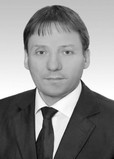Perception of Future in Physical Education and Sports Process: Problems and Prospects
Фотографии:
ˑ:
PhD, Associate Professor A.N. Yakovlev1
Dr.Hab., Professor Е.Р. Vrublevskiy2, 3
PhD, Associate Professor V.I. Stadnik1
A.A. Kravchenin1
Master M.A. Yakovleva4
Master student N.A. Glushenko5
1Polessky State University, Pinsk, Republic of Belarus
2Francisk Skorina Gomel State University, Gomel, Republic of Belarus
3Zelenogur University, Zelenaya Gora, Poland
4Smolensk State University, Smolensk
5Far Eastern Federal University, Vladivostok
Objective of the study was to identify psychological and pedagogical features of perception of the future in adolescents during their physical education and sports activities.
Methods and structure of the study. The study involved the 17-20 year-old full-time students of Smolensk Academy of Professional Education (Regional State Budget Professional Educational Institution SmolAPE), who were engaged in various sports (n=47). Creativity as a personality trait was tested in the 15-16 year-old male (n=18) and female (n=17) schoolchildren (tenth-graders) of Smolensk, who were engaged in team sports.
Results of the study. We determined the overall level of meaning in life, total life satisfaction and irrational attitudes of university students, as well as the correlation between the scales of irrational attitudes and levels of life satisfaction index.
Conclusion. The study showed that in the 10th grade, it was the hyperthymic type of accentuation of personality traits that prevailed in the students (34%). 23% of sporting school graduates belonged to the cyclothymic type of accentuation, and 20% - to the emotive one.
Keywords: irrational, creativity, physical culture and sports activities, character, adolescents.
References
- Bykhovskaya I.M. Obrazovanie i kultura zdorovya [Education and health culture]. Children of Russia educated and healthy. proc. III nat. respractical conf. M., 2005. pp. 28-32.
- Vrublevsky E.P., Kostyuchenko V.F. Morfofunktsionalnyie aspektyi otbora i trenirovki sportsmenok v skorostnosilovyih vidah legkoy atletiki [Morphological and functional aspects of selection and training of athletes in speedstrength athletics disciplines]. Uchenye zapiski universiteta im. P.F. Lesgafta. 2009. no. 4 (50). pp. 33-38.
- Gazarova E.E., Zinchenko V.P., Levy T.S. [ed.] Telo i telesnost: psihologicheskiy analiz [Body and physicality: psychological analysis]. The psychology of corporeality between soul and body. M .: AST publ., 2005. pp. 558-574.
- Gannushkin P.B. Izbrannyie trudyi po psihiatrii [Selected works on psychiatry]. Rostov-on-Don: Fenix publ., 2008.308 p.
- Kolesnichenko V.O. Znachenie haraktera v samorealizatsii i samoregulyatsii tvorcheskoy lichnosti [Role of temperament in selfrealization and selfregulation of creative person]. Uchenye zapiski Orlovskogo gosudarstvennogo universiteta. 2013. no. 2 (52). pp. 353-335.
- Leontiev D.A. Test smyislozhiznennyih orientatsii (SZhO) [Life orientation test (LSS)]. 2nd ed. M.: Smysl publ., 2000.18 p.
- Leonard K. Aktsentuirovannyie lichnosti [Accentuated Persons]. M.: Eksmo publ., 2006.347 p.
- Lichko A.E. Klinicheskaya i psihologicheskaya diagnostika tipov psihopatiy i aktsentuatsiy haraktera. Tipyi aktsentuatsiy haraktera i psihopatiy u podrostkov [Clinical and psychological diagnostics of types of psychopathy and character accentuations. Types of character accentuations and psychopathy in adolescents]. M .: AprilPress, 2009. pp. 111-241.
- Semenov V.G., Vrublevsky E.P. Zakonomernosti adaptatsionnoy izmenchivosti sily myishts zhenschinsprinterov v protsesse stanovleniya sportivnogo masterstva [Patterns of adaptive variability of muscle strength of female sprinters in sport skills building process]. Teoriya i praktika fiz. kultury. 2000. no. 9. pp. 22-24.
- Ellis A. Gumanisticheskaya psihoterapiya: Ratsionalnoemotsionalny podhod [Humanistic Psychotherapy: RationalEmotional Approach]. Transl. from English. St. Petersburg: EKSMOPress, 2002.272 p.
- Yakovlev A.N. Nauchnometodicheskie osnovyi fizicheskoy kulturyi i sporta v obrazovatelnom prostranstve vyisshey shkolyi v kontekste novyih predstavleniy o sporte kak mirovoy religii nashego vremeni [Scientific and methodological foundations of physical education and sports in higher educational space of education in context of new ideas about sports as world religion of our time. Smolensk: Branch of RGUTiS publ., 2009. 368 p.
- Yakovlev A.N. Fizkulturnosportivnaya deyatelnost: problema telesnosti i plastiki dvizheniy [Sports and athletic activities: problem of physicality and plastic movements]. Uchenye zapiski universiteta im. P.F. Lesgafta. 2013. no. 5 (99). pp. 151-159.
- Yakovlev A.N. Sotsialnofilosofskie aspektyi issledovaniya problemyi telesnosti v fizkulturnosportivnoy deyatelnosti [Sociophilosophical aspects of study of physicality problem in physical education and sports]. Izvestiya Sochinskogo gosudarstvennogo universiteta. 2014.no. 1 (29). pp. 287-290.
- Yakovlev A.N., Yakovleva M.A. Kreativnost haraktera i osobennosti fizkulturnosportivnoy deyatelnosti v sisteme integratsionnogo obrazovatelnogo protsessa Respubliki Belarus i Rossiyskoy Federatsii [Creativity of character and features of physical education and sports activities in system of integration educational process of the Republic of Belarus and the Russian Federation]. Uchenye zapiski universiteta im. P.F. Lesgafta. 2016. no. 10 (140). pp. 274-277.
- Vrublevskiy E.P., Khorshid A.Kh., Albarkaii D.A. Focused strength and speedstrength trainings of sprinters. Teoriya i Praktika Fizicheskoy Kultury, 2019, 4, рр.35.



 Журнал "THEORY AND PRACTICE
Журнал "THEORY AND PRACTICE